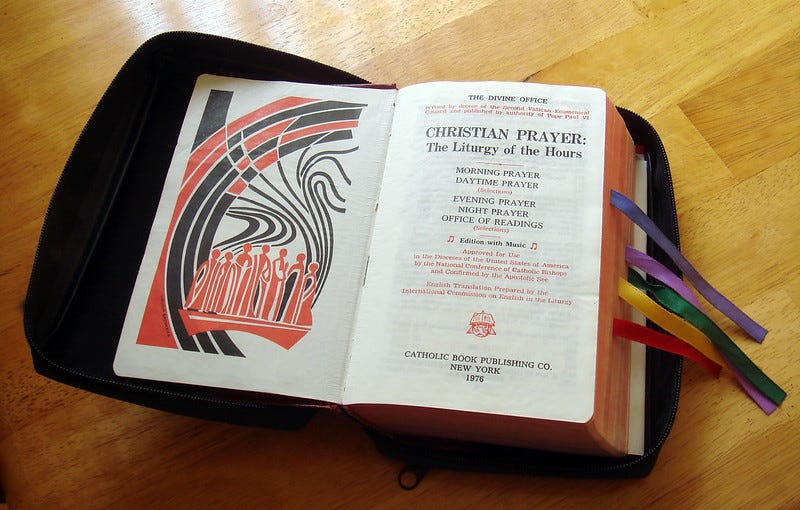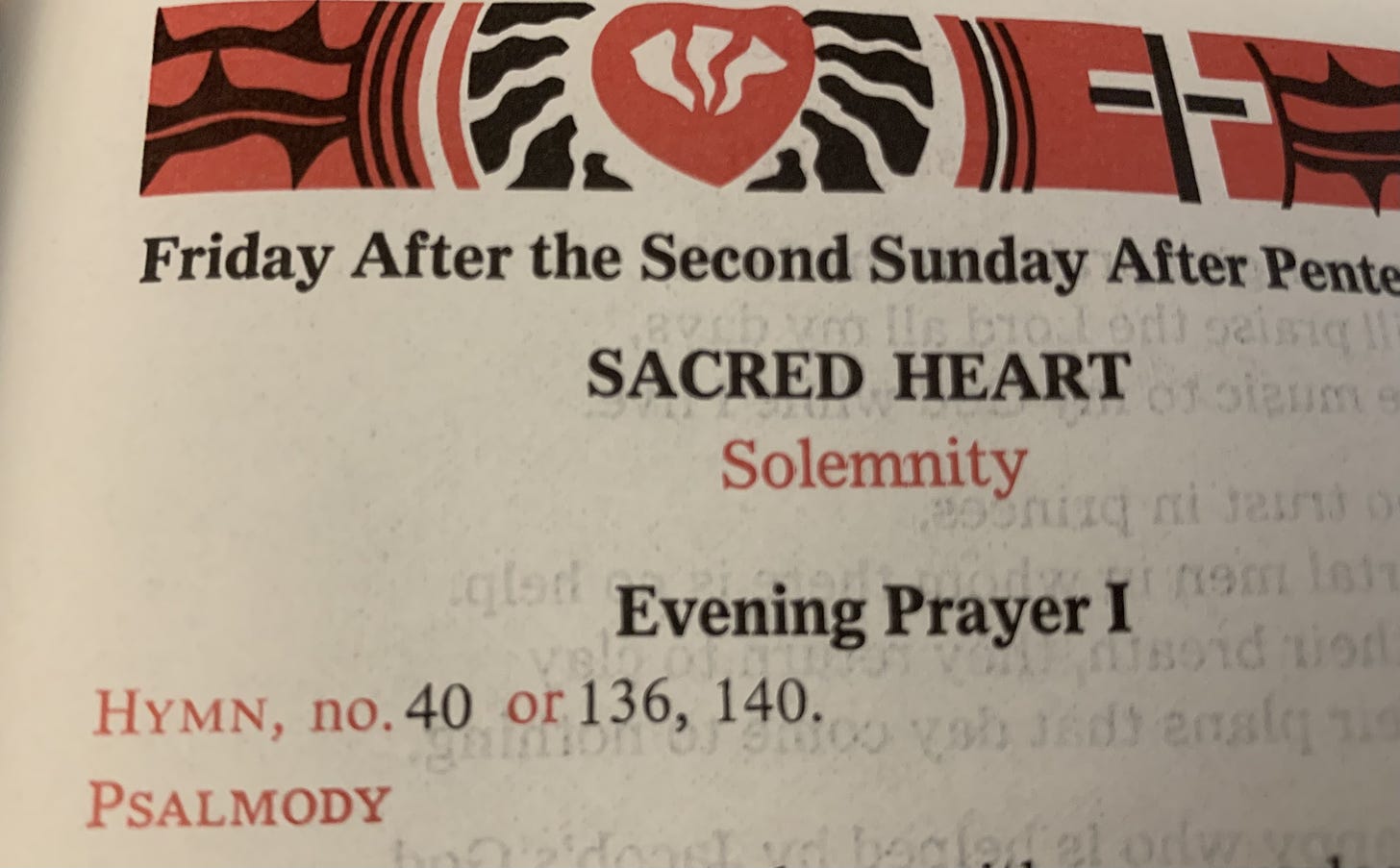
When the U.S. bishops’ conference meets online next week, the bishops will vote to approve a set of translations connected to the Liturgy of the Hours and other liturgical texts.
To help make sense of that vote, The Pillar talked with Fr. Andrew Menke, executive director of the USCCB’s office for divine worship, about a project to retranslate the Liturgy of the Hours. We asked how it got started, and when it could be finished.
This interview has been edited for length and clarity.
Father, I want to talk about the process of retranslating the Liturgy of the Hours. But can you explain how people began to pray the Divine Office in the life of the Church?
The Liturgy of the Hours apparently had a sort of a double origin in the early Church. There was monastic prayer, which emphasized prayer at various times in the day and longer vigils at night. But the other origin was in cathedrals — when the Church was smaller, people in some places would come and pray with their bishop to start and finish every day.
Eventually these two trends developed into single books of prayer, with lots of variations in different places. And then eventually it became mainly a clerical and monastic sort of prayer, and stayed that way for a long time. More recently, the bishops at the Second Vatican Council called for the book to be revised and simplified somewhat and put into the vernacular language. And they also encouraged it for the laity as well.
I think some laity have really come to love it and there’s some growth, I think, but overall it hasn’t really caught hold. But I see some hopeful signs. And I am optimistic that we might start to see a renaissance where the Liturgy of the Hours starts to become a more common part of Catholic life, for individuals and parishes.
The Liturgy of the Hours has been in the process of being retranslated for a while. Can you talk about the reason for a new translation, and tell us something about the history of the process?
After Vatican Council II, new editions of the liturgical books were issued — all the liturgical books — and they were issued in Latin. Fairly quickly, and by a pretty impressive effort, they were translated into English, in very short order.
Those first translations tended to be somewhat loose, however. That was probably in part because they were in a hurry, and partly because it was a new job for the Church, to translate liturgical texts into English. And so this first generation of liturgical texts were fairly loose English translations. Around the year 2000, the Vatican decided that liturgical translations needed to be more accurate and precise, and that kicked off a wave of retranslation projects.
The most notable of those was the Roman Missal, for which a new English translation came out in 2011. But since then we've continued to retranslate all of the liturgical books. We've been working our way through them: there are new translations of the[rites of baptism for children, matrimony, the dedication of a church, exorcism, and several others. So we're kind of gradually working through this second generation of English translations of liturgical books. So I think it’s fair to say that the Liturgy of the Hours is just simply a part of that overall project.
On another level, I guess, it was the U.S. bishops who really decided to prioritize the Liturgy of the Hours. I think it was for a couple of reasons: first, because our English version of the Liturgy of the Hours is based on the first Latin edition that was issued after the Second Vatican Council, but in 1985 the Vatican came out with a second edition of the Liturgy of the Hours, and we still haven't retranslated that second edition. So in a sense, our book is outdated, so it's a necessary update.
The second reason is that when the new Roman Missal came out it became glaringly obvious that when there's overlap the two translations are very different. So the opening prayer, or the “Collect,” at Mass is often the concluding prayer of Morning Prayer or Evening Prayer in the Liturgy of the Hours. But now that the Missal translation – since 2011 – is very precise and the breviary translation is somewhat paraphrased, the difference jumps out at you. And I think that's a big part of why the bishops thought that we needed to have an update to the Liturgy of the Hours.
How far along are the bishops into the project?
It’s a massive book, around 8,000 pages. So we’ve been working through it steadily for several years, doing different categories of material and different sections of the book in a systematic way. I’d say we’re probably three-fourths finished at this point
The bishops’ conference has voted on different sections of the breviary at meetings in recent years, kind of going through in pieces, rather than waiting to vote on the whole thing. Why is that?
Certainly the bishops could have decided they were going to wait until the whole thing is finished and then voted on the complete book. But instead they’ve been voting it piece-by-piece as the translators finish different sections. That’s what the bishops did as the Roman Missal was retranslated as well. One advantage to this system is that the translators get immediate feedback on their work and make adjustments as they go. My sense is that at the end there will be an opportunity for the bishops to review everything, but we’ll see exactly how that will work out.
The translations are done by ICEL - The International Commission on English in the Liturgy. What exactly is ICEL? What is its role in the process?
Because there are quite a few countries where English is spoken, those countries all decided that we should work together to prepare liturgical translations, rather than each of us doing this work separately. That was decided in the 1960s, and so the International Commission on English in the Liturgy was formed.
ICEL is operated by the English-speaking episcopal conferences around the world — 11 countries that are full members and then 15 countries that are associate members. So, for example, Bangladesh is an associate member of ICEL because English is used fairly often in liturgy there, even if it isn’t the primary language in the country.
Each of the full members has a representative to the Commission — ours is Archbishop Leonard Blair from Hartford, who is also chairman of the USCCB liturgy committee. ICEL has a staff that works with translators to prepare a text, and then the bishops who are the representatives to ICEL review the translations. Once the texts meet their approval, ICEL sends them out to the bishops’ conferences.
Approving translations is a two-stage process: ICEL sends out a first draft and the bishops can look at it and offer suggestions or proposed modifications, and those are sent back to ICEL. And then when their draft is completely finished, ICEL sends the conferences that final draft. And then at that point, each conference is free to do what they choose in terms of modifications or changes. And sometimes the USCCB’s bishops will make tweaks or changes. We don’t take ICEL’s work and rubber-stamp it; instead the bishops look at it and make sure it meets their approval.
So in the English-speaking countries, while ICEL gives a template, the bishops’ conferences can make changes, so that things might still be a bit different in different countries?
That’s right. I should mention that ICEL doesn’t deal with Scripture. Each country can choose which Scripture translation they want to use. For example, we use the New American Bible, and other countries use different translations. In addition, each country has its own liturgical calendar honoring local saints, so that also accounts for differences in the liturgical books from country to country. But overall the English liturgical books worldwide are fairly consistent.
Now, with the Liturgy of the Hours there is another complication because while the U.S. uses the ICEL version of the breviary, England uses a different translation. And so the hours in England are a completely different translation from what we have. [ed. note: While the Church in the U.S., Canada, and a few other English speaking countries uses the ICEL translation of the breviary, Catholics in the United Kingdom, Australia, and New Zealand currently use the independently developed English translation.] It will be interesting to see whether the new ICEL translation might eventually be adopted in England.
The question I hear most often about the breviary translation process is this: When will it be done?
The best-case scenario is 2024. We’re more or less on track for that. Right now, the wild card might be the Scripture. ICEL is doing its job well and has been finishing its translations on schedule. But the Scripture is our responsibility, and our bishops decided some time ago to revise the New American Bible. So there is a team of scholars right now working on revising that translation. We’ve tried to coordinate ourselves so that they’ll finish their work at the same time that we’re finishing our work. But if the Scripture project takes longer than anticipated, that could delay the completion of the Liturgy of the Hours.
Vatican approval is another wild card. When the bishops approve something and send it over to Rome for confirmation, that process can sometimes take a little while. But the new prefect of the Congregation for Divine Worship, Archbishop Arthur Roche, has been very supportive of this project, and so that makes me hopeful that when we're done, it will see a quick approval.
In 2017, Pope Francis promulgated a motu proprio on liturgical translations Magnum principium. How does that make a difference in this process?
It seems to me that the main thing Magnum principium does is to say that the Vatican is going to trust the conference’s judgment on questions of translation.
So that should make it easier…
It should make it easier for us. When we send something over, they’ll make sure that a translation isn’t tragically flawed, but my read is that at the end of the day, the Holy See is going to respect the decision of the bishops when it comes to liturgical translation.
Have the principles of translation changed?
The current guidelines for liturgical translation are found in a document called Liturgiam authenticum, which is pretty detailed with regard to instructions about the sorts of things translations should convey. Magnum principium did not address the details of those issues, but seemed to concentrate more on the question of who decides that a translation is appropriate for liturgical use – the bishops’ conference or the [Vatican] Congregation [for Divine Worship].
Magnum principium shifted the emphasis away from Rome, in favor of the local bishops. So I don’t think we’re working with a different hermeneutic for how to translate, and at the end of the day, it will be our bishops’ decisions as whether or not these translations have been faithfully and accurately done.
So when might people be able to actually buy new breviaries?
I’m estimating that 2024 is the best-case scenario for a published edition. The current plan has the bishops’ final vote on translations in June of 2023. So I am optimistic that if we get an approval in six months or less from Rome, that perhaps by Advent of 2024, that new breviaries might actually be available. But that, again, is our best-case scenario, and any number of factors could delay the completion.




